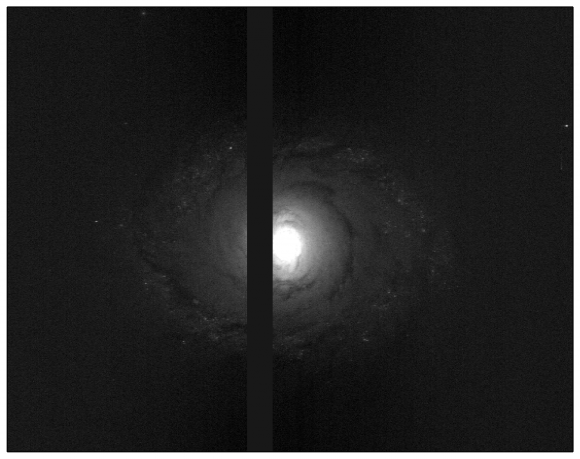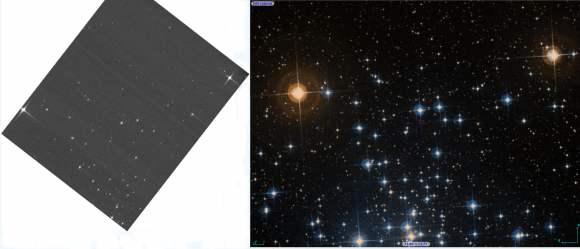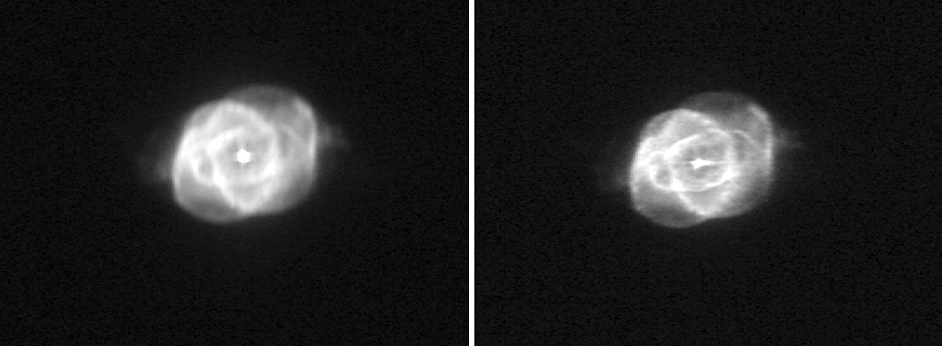Here’s a glimpse of how a telescope gets ready for its main mission. The European Space Agency’s Gaia telescope is in the middle of a commissioning phase before mapping out the locations of stars and other objects in the Milky Way. While the nominal mission is not to take pictures, it is through these images that controllers can verify that the telescope is tuned properly to do its work.
What you’re seeing is data from the Gaia camera’s “sky-mapper strips” that are actually intensity maps rendered in black and white, ESA explained. You can see in the picture above that the shot on the left is a bit blurry, while the one on the right looks a bit sharper. That’s because controllers better calibrated the charged coupled devices to the spacecraft’s spin rate, ESA said.
Lucky for us, ESA is sharing those images so we can see the process in action. This set of pictures below follows on from a calibration image of the Large Magellanic Cloud that was released last week. More details are available at ESA and also in this Dec. 19 Universe Today story.



